You’re driving home from work one day, and BANG, it goes down.
The Shiz has hit the fan. Your car is out of commission and like most commuters, you’ve got a good distance to go to make it home.
You quickly check your Get Home Bag, strap it on and start moving! What separates you from everyone else stuck on that stretch of road?
The contents of your GHB (Get Home Bag) and a few items from your Automobile EDC Supplies are what separates you from them!
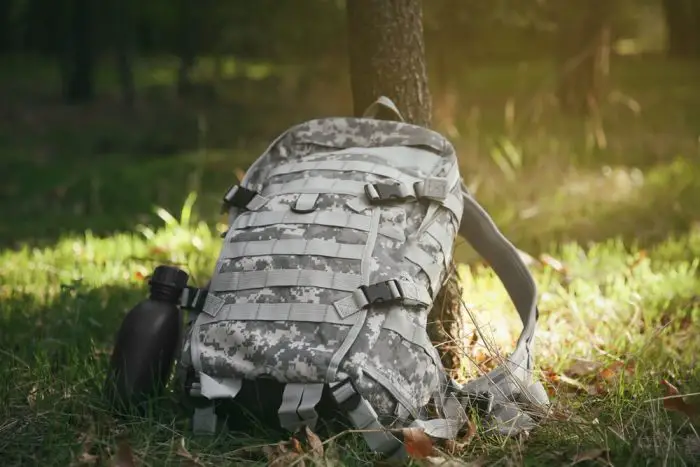
First, let’s figure out what constitutes a Get Home Bag. I like to think of a Get Home Bag as a backpack, filled with enough tools and supplies to get me home. We may not have to hike a thousand miles, but some of us might end up on foot for more than 40 miles.
A. Choosing the Type of Bag:
1) Backpack:
You don’t have to use a backpack, but I want something I can strap on and go! You’ll probably want to avoid anything expensive, fancy or tactical.
I used an old computer backpack. You’ll want a backpack that looks very similar to what the other commuters would carry.
While tactical backpacks serve as great bug out bags, due to the design and ruggedness, we’d recommend avoiding tactical backpacks with strong camouflage patterns in order to avoid standing out.
You don’t want the other stranded motorists to think that you may have anything that they don’t.
People get real sketchy in life or death situations.
For more on this see: Covert Prepper Backpack and the tactical backpack guide by Globo Surf
Backpacks are staples because they offer hands-free carrying and hefty storage space. In situations where you’ll need to sneak, run or climb, backpacks won’t slow you down or give you trouble.
One notable downside is that backpacks aren’t easily accessible if you’re mobile. Plus, a large backpack is more noticeable as compared to the other bags on this list.
2) Messenger Bag:
Messenger bags are great for retrieving stuff from your bag while you’re on the go. It also works as a discreet get home bag if you’re more on stealth than brute storage space.
One disadvantage is that you’ll have to position the messenger bag so it won’t get in your way while you’re running. It becomes more cumbersome the farther the distance and weight distribution becomes more noticeable over time.
3) Hydration Pack:
Hydration packs are for those who’d like to exercise minimalism in their get home bags. It stores an adequate amount of water and can easily be carried over large distances.
The waist and shoulder straps add a nice touch in terms of efficient weight distribution. One downside is that you can only hold water and very little else.
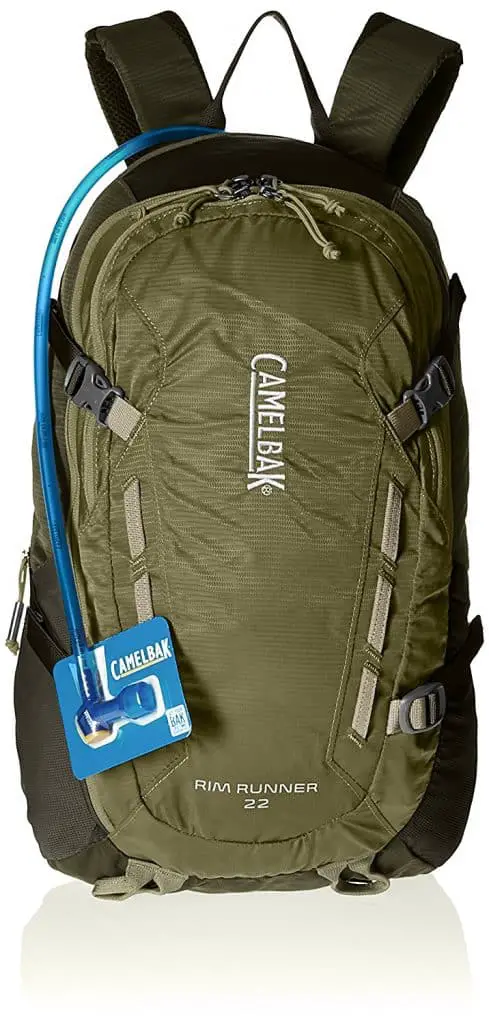
4) Lumbar/Mountaineering Hiking Pack:
Lumbar packs are designed to put the weight on your hips. It’s compact and the pack’s contents can easily be accessed if needed.
One downside is that you can’t fit in additional items and you’d need to rely on the external straps to do so, which sacrifices a bit of mobility.
Here’s what you can do to determine which one works best in your situation. Assemble everything you’d need and spread it out. This will give you an idea of how large you’ll need your get home bag to fit them all in.
A bug out bag and a get home bag primarily works in the same way. If your get home bag and bug out bag are roughly the same sizes, then you may want to re-prioritize what you’ll really need in order to get home safely. The only exception is that if it takes you more than an hour to get to work.
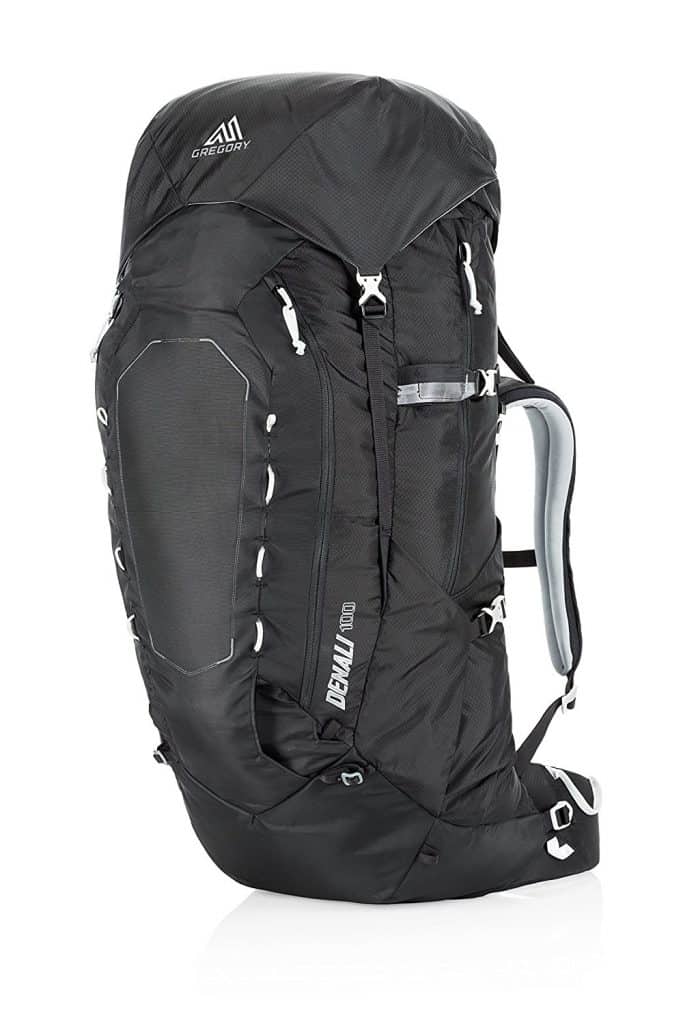
B. Get Home Bag vs. Everyday Carry Kit vs. Bug Out Bag
You’ll need all three of these survival bags in order to be prepared for anything. The Every Day Carry Kit will contain the necessary tools, items and survival materials you’ll be using daily.
If you’re at a loss to what that is, think about the most common tools you wish you’d have when you’re faced with a problem, i.e., a flashlight, scissors, extra batteries, etc
The Get Home Bag will contain the necessary tools, food and other elements that give you a greater chance to make it home safely and in one piece. It doesn’t matter whether you’re commuting or driving your own car.
In cases of civil unrest, natural disasters and minor inconveniences such as experiencing a car breakdown and road closure, you’ll want to be equipped with things that will tide you over the course of roughly 24 to 48 hours. Keep it as compact as possible while still being versatile.
The Bug Out Bag will contain items that you’ll need to survive for a few days. Everything you need should fit in and it should still be light enough for you to carry.
Bug Out Bags are stored in a convenient part of the house and should be ready within a moment’s notice.
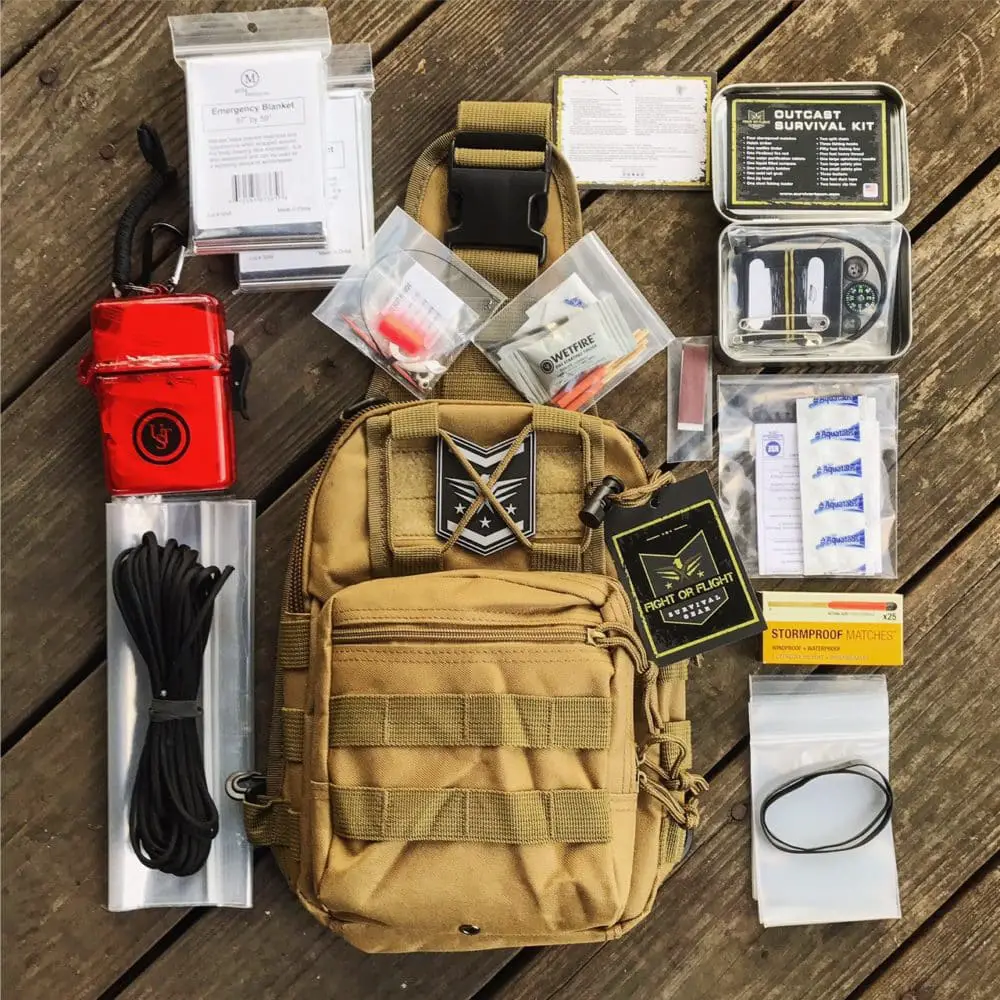
C. Get Home Bag Contents:
The contents of your Get Home Bag should contain these types of items:
1. Extra Medications / Fever reducers
2. Flashlight or Knife – You’ll need a sturdy, water-proof headlamp or flashlight. It should have a stable hands-free feature and has several light modes including strobe signals, dimming, and flash. Be sure to have extra batteries.
3. Sensible Walking or Hiking Shoes – If you wear heels or dress shoes to work, keep a comfortable pair of sneakers or walking shoes in your car.
4. Extra Socks – Traveling long distances won’t be so great for your feet. You’ll need extra socks to keep comfortable and in instances where you need to ward off sores and blisters. Pack in wool socks if you know that you’re going to travel long distances.
5. Knife – We’re talking about a survival knife. One that can baton wood, cut cord, skin game, and do all the things a good, rugged, outdoorsy knife can do. It doesn’t have to be expensive, but it should be decent. This is exactly why I have a Cold Steel Bushman knife. We did a couple of posts on knives: Budget Survival Knife: Cold Steel Bushman knife, Becker BK2 Companion Survival Knife, and the recent Bushcraft Buyers Guide.
6. Fire – Firesteel, waterproof matches or a bunch of Bic Lighters, just have some way to make fire. It’s best to pack in several means to start a fire because this element can mean the difference between life and death. One fire-starting product to consider is a compact and waterproof/ windproof lighter that starts reliably in rough conditions.
6. Knife – This can act as your rain gear and your shelter tarp, or in a pinch, you add a poncho liner or jungle blanket and you’ve got a weather-resistant sleep system. That’s right multi-use gear, 3 birds with one stone (I know I just blew your mind). If you can’t envision how a poncho becomes a shelter here are a few links to help you out: 9 Military Poncho Survival Shelter Configurations and Poncho and Tarp Shelters
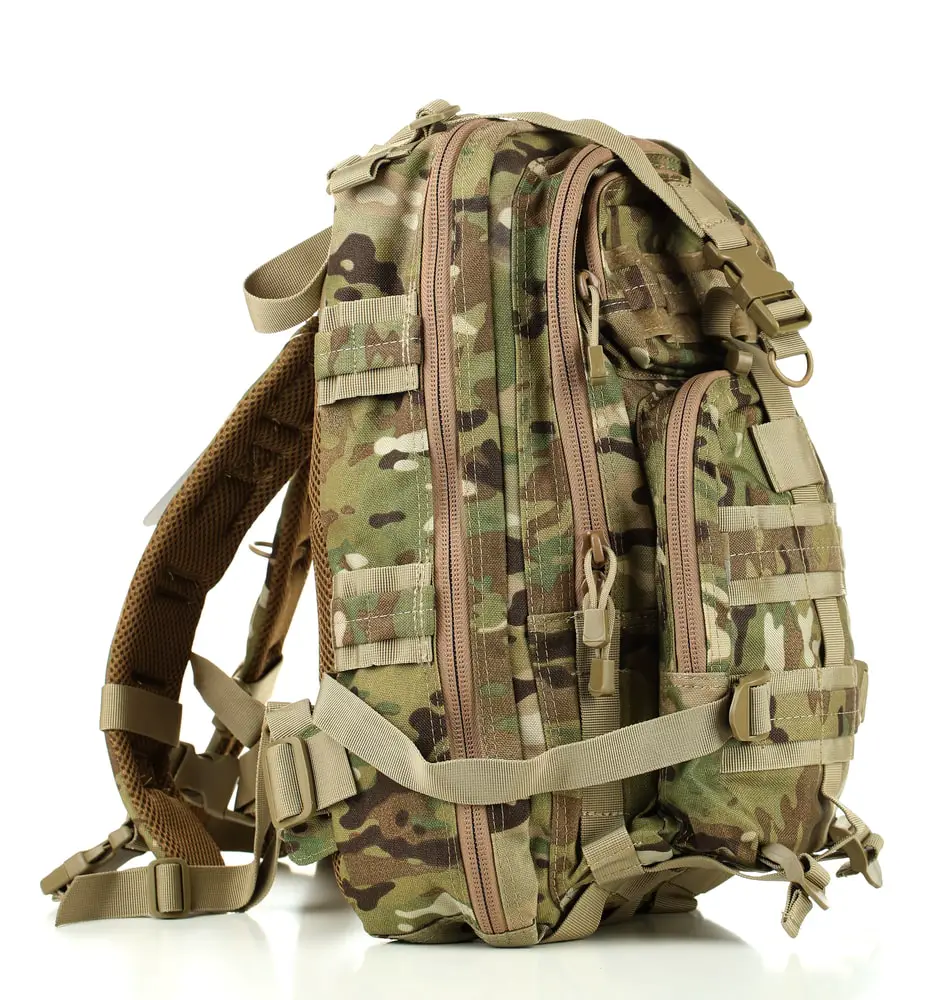
7. Rope / Cordage – pick up at least 100 feet of 550 paracord. You’ll need it to rig your poncho into a shelter and you’ll probably need it for a bunch of other things.
8. Duct Tape – I just take an old plastic card (library, shoppers rewards, etc) and wrap a decent amount of duct tape around it. I don’t want to carry a huge 8-inch thick roll of duct tape, but I want some, so I make sure to have about 1/2 inch thick roll of duct tape, conveniently off the roll and around the flat card. This will fit easily in our GHB.
9. Multitool – Like most of the items in your get home bag, your multi-tool should be high-quality and carefully considered. It should have at least wire cutters, cross point, and flat drivers, pliers, a saw blade and a solid knife blade. This will be your go-to item for cutting rope, small pieces of wood, building a tent and more. If you’re handy and well-trained with a knife, you can opt for a fixed blade or a machete depending on the perceived situation.
10. Backpack first aid kit – You can buy one or make your own. Basic first aid items such as medical tape, moleskin, gauze pads, splint, tweezers and bandages should be included. You’ll also need medications that provide relief from common aches and pains such as antacids, aspirin, Tylenol, etc. If you wear eyeglasses it will be wise to pack in a backup just in case.
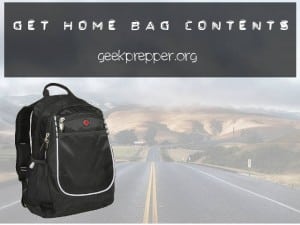
11. Bandana or Shemagh – Head covering, sling, sediment water filter (will not purify water) and a trillion other uses. Trust me, these are awesome to have.
12. Hat – Keep sun off head, if winter have a stocking cap (WOOL).
13. Compass (or GPS) and MAPS! – Get the Delorme atlas for your state and keep one in your car.
You should assume that the main roads are congested in times of emergency. A map that will show you detours and alternative routes will come in very handy. If you have the time, you can scout in advance for possible routes to take.
14. Sun Screen
15. Insect Repellent
16. Food and Snacks – Simple is best when it comes to emergency food rations. You’ll need around 3 to 6 energy bars to get started. Trail mixes and high-calorie bars should do well.
You won’t need to heat them up and they can be eaten while you’re on the go. The nutrition you get from these bars should power you up physically and mentally.
17. Water / Water purification tabs or Water filter – You wouldn’t want to risk getting sick from drinking local water sources.
18. Stainless Steel water bottle – This can save you from buying the $4 plastic bottled water on road trips and can be used to carry and boil water if you find yourself stranded far from home! If you don’t go stainless steel, you still need a way to carry water so consider a Nalgene bottle or a collapsible water bottle, if space is tight.
19. Toilet Paper – Walking a long distance sucks, and you will have a nature call.
20. Sunglasses – to protect eyes from sun and debris (goggles might even be good).
21. Work or utility gloves – You’ll be working with your hands most of the time outdoors, so it’s best to protect it. Pick the best one in the current season. Get thick ones and gloves that will protect you against scrapes, scratches, cuts, and burns.
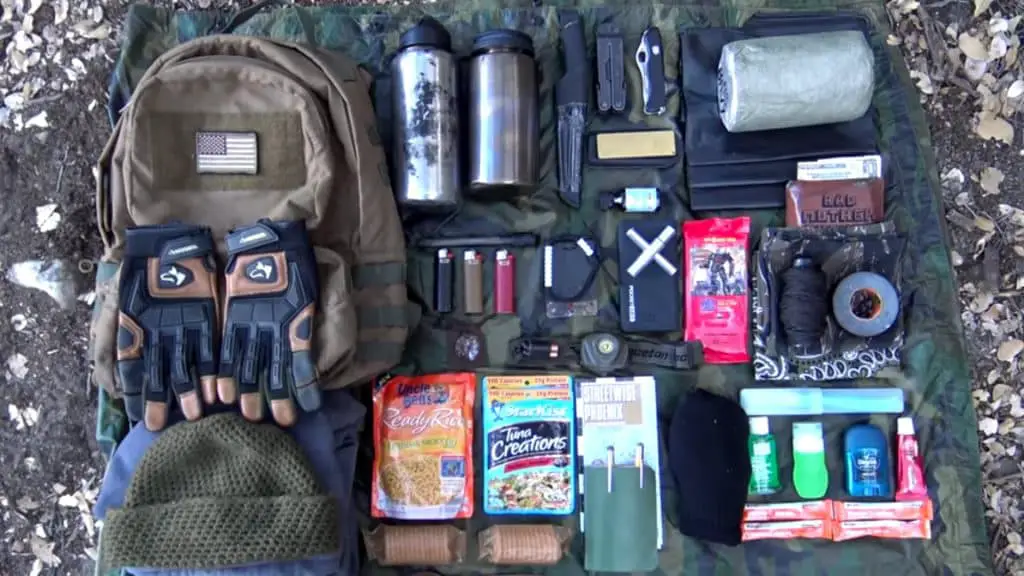
22. Wet Wipes / Baby Wipes
23. Cash – Cash is always useful to have, especially in emergency situations. Don’t carry large bills- instead, a bundle of ’20s should do the trick quite well. It’s wise to spread your money out in different places so you won’t reveal all of your money at once.
24. PrePaid Calling Card (in case you need to use a payphone)
25. Prepaid Credit Card
26. Rope or Cordage – It’s light and serves a thousand outdoor uses. It would be foolish not to put one in your get home bag!
27. Wet Wipes – A pack of wet napkins provide handy and convenience for when you need quick spit baths. Hand sanitizers are small enough so don’t forget to put one or two for good measure.
28. Paper and Pencil– Use this for recording information and leaving a note. With it, you can map landmarks or write down coordinates of places that could be useful later.
29. Weather Appropriate Clothing – One of the first things you’ll need is a change of clothes for practical reasons. Don’t forget to include a comfortable hat and a tough pair of gloves.
Extra clothing should be rotated constantly depending on the season. You’ll certainly need dry clothes in wet and cold conditions or else you won’t survive the trip home. Layering up is essential to keep body warmth intact as you travel outdoors.
30. N95 Face Mask – You’ll be needing an N95 Mask to keep away that dust, dirt, sand, bacteria and viruses floating about. A t-shirt won’t be as effective.
31. Emergency Radio – The best one to pick is a hand-cranked dynamo that’s small and compact. Check and see if the radio gets NOAA Hazard and Weather Alerts. If the city or state goes into a blackout, you can rely on your emergency radio for useful information.
If possible, get a unit that also has a charging port for your smartphone or mobile device. You may not realize it now but having timely information regarding weather and emergency alerts will prove to be useful in catastrophic events.
32. Firearm and Extra Ammo – Get this type of self-defense if you live in a state that allows it. Pack a few extra magazines or rounds into the get home bag in times when you need stopping power.
33. Walking Stick – There’s a very good chance that you’ll be walking most of the time. Collapsible walking sticks are convenient and provide support for your knees while on extended travel. This item can also double as an emergency shelter when coupled with a poncho.
34. Glowsticks – Get the ones that give you 12 hours of light. It’s useful as it could be attached in shelters or when you need to light the trail in unfamiliar terrain.
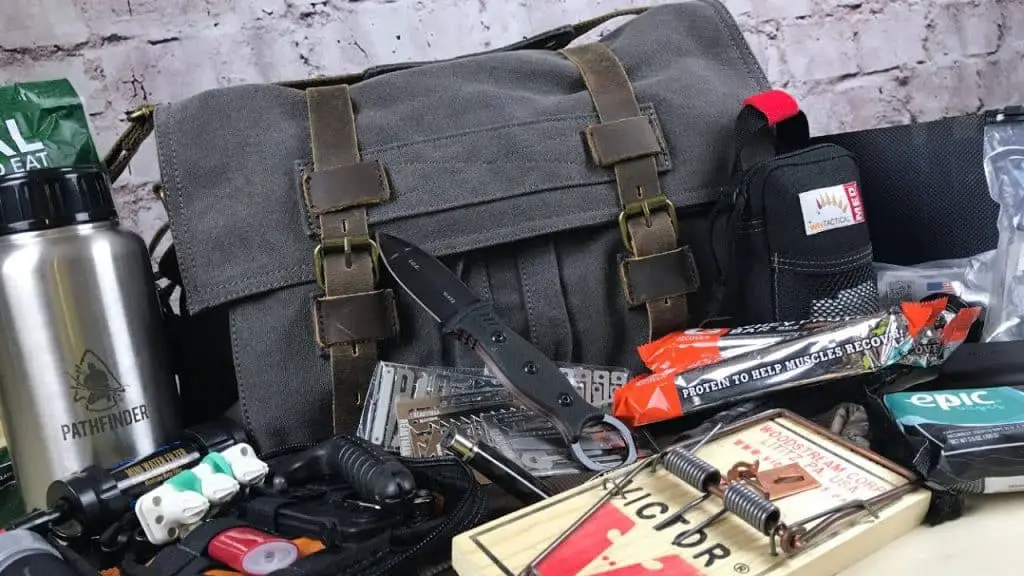
Bonus Items
35. Personal Defense items (legal in your area) – Mace, Pepper Spray, etc. People panic and are often irrational in large-scale emergency situations. It’s a breeding ground of confrontation and desperation.
You should keep this in mind and think about self-defense as part of surviving the ordeal. Avoid hand-to-hand combat; it’s wise to pack in a strong pepper spray, a firing taser or a compact handgun to show hostile forces that you shouldn’t be taken lightly.
36. Solar Charger for a phone (and GPS)
37. Small Binoculars – You’ll want to be able to check for obstacles and “situations” before you get to them. These don’t have to be pricey. I’ve linked to a small Coleman 10×25 pair.
38. Emergency Signal – Pack in a small mirror or a flare for when you need long-distance signaling items. A whistle can also come in handy.
D. Get Home Bag Care & Management
1) Is a Get Home Bag Even Necessary?
The short answer is YES. One of the best things you can do is to prepare for the unexpected.
There are a number of unforeseen circumstances that can happen anytime- earthquakes, riots, flooding, plagues, hurricanes, fierce storms, terrorist attacks and nuclear war.
A get home bag serves to increase the chances of you making it home and planning the next step. Even if these calamities didn’t happen, you’ll have peace of mind knowing that you’re ready at any given time.
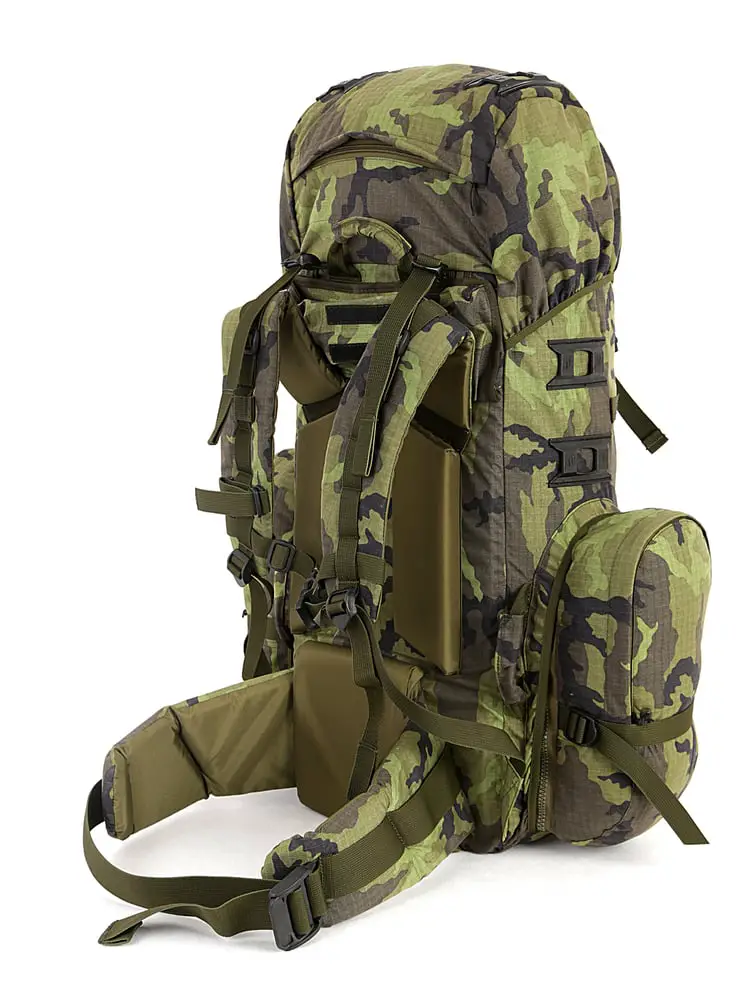
At the very least a get home bag can make you more comfortable in non-calamities such as extreme traffic, road closures and forced overnight stays.
2) Storing Your Get Home Bag
A get home bag can get you home even amidst huge calamities and disasters, but it only works if you have it with you most of the time.
Stashing it in the trunk of your car is not recommended as your vehicle may prove to be inaccessible in certain situations, i.e., riots, earthquakes, etc.
Good storage places include your office, a nearby public locker or a PO Box. The key here is that it should be accessible most of the time.
If your line of work requires you to travel by car, then it will be acceptable to keep it stored in your trunk. This is because most of the time you’ll be inside the vehicle as compared to being far away from it.
3) Organizing Your Get Home Bag
Your get home bag will consist of roughly 3 levels. Every level will have items you’ll need to survive for a specific time period.
The bottom items are more of the long-term variety while the ones on top are the ones that you’ll be sure to need right away.
Level 1
The first level should be the most accessible of the three. This level will ensure that you get home safely within a 3-hour period. The items here will prove to be very useful but aren’t helpful when it comes to overnight stays.
Level 2
The second level should have items that will tide you over after a length of time has passed, i.e., 8 hours or more. Consider putting items that you’ll need for a 12-hour journey here.
Level 3
The third level should contain essential sleeping gear and anything that will be of value for long-term travel. Pack in items that you’ll need for an overnight trip.
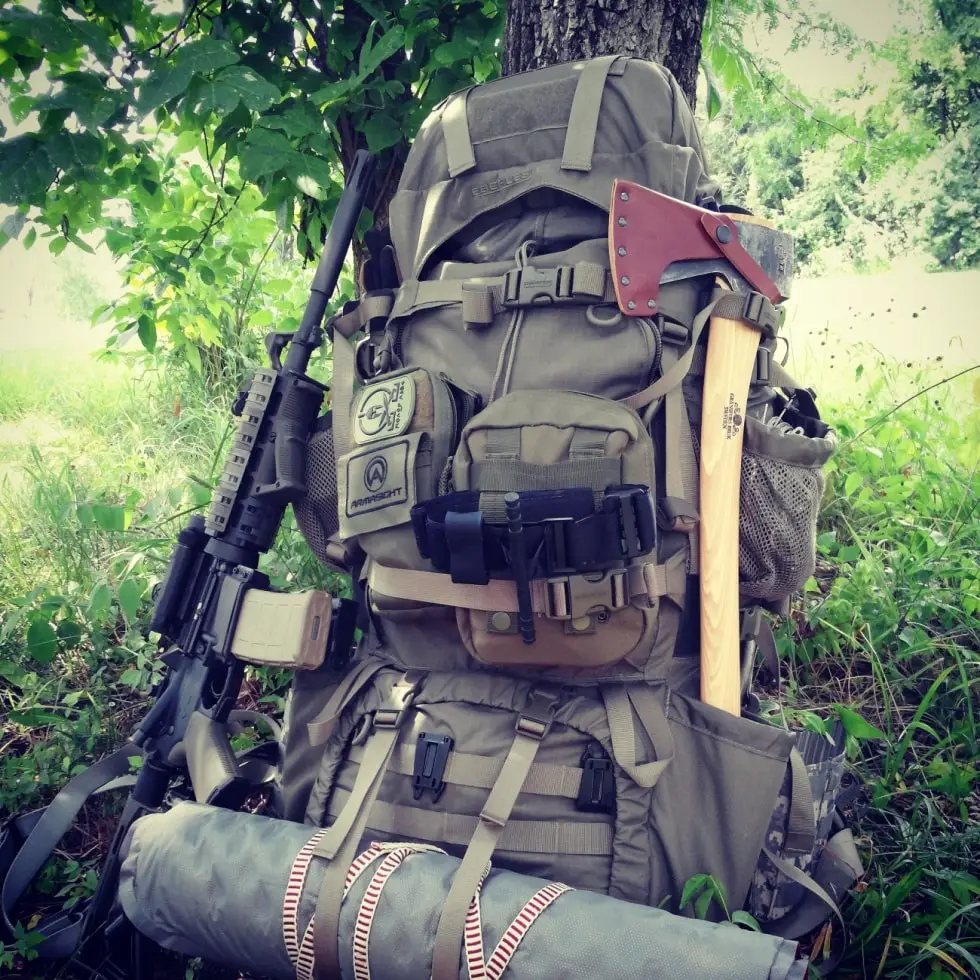
4) Customizing Your Get Home Bag
Each individual can have special needs. How you customize your get home bag will depend on your personal circumstances or situation.
You’ll need to think about the season, your region and the type of commute that’s available to you. For example, an urban environment may have required more specific items as compared to the rural routes.
Your job, office location and career may change how you prepare your get home bag. Plus, you’ll need to think about possible emergencies and the geographical location to see if there’s anything else you’ll need.
Think about your commute from home to work, then work to home. Do you know of any alternate routes or paths that could prove to be useful? A detour through the park, a trail or unused alleys are just a few examples.
Think about what you’ll need so you can travel without compromising your health or safety. Get a bird’s eye view of all the possible scenarios.
Answer the following questions- will you be walking through the woods or around bodies of water? What are the quickest routes to take? Which ones take the longest? What are the ones that get you the most exposed to the public?
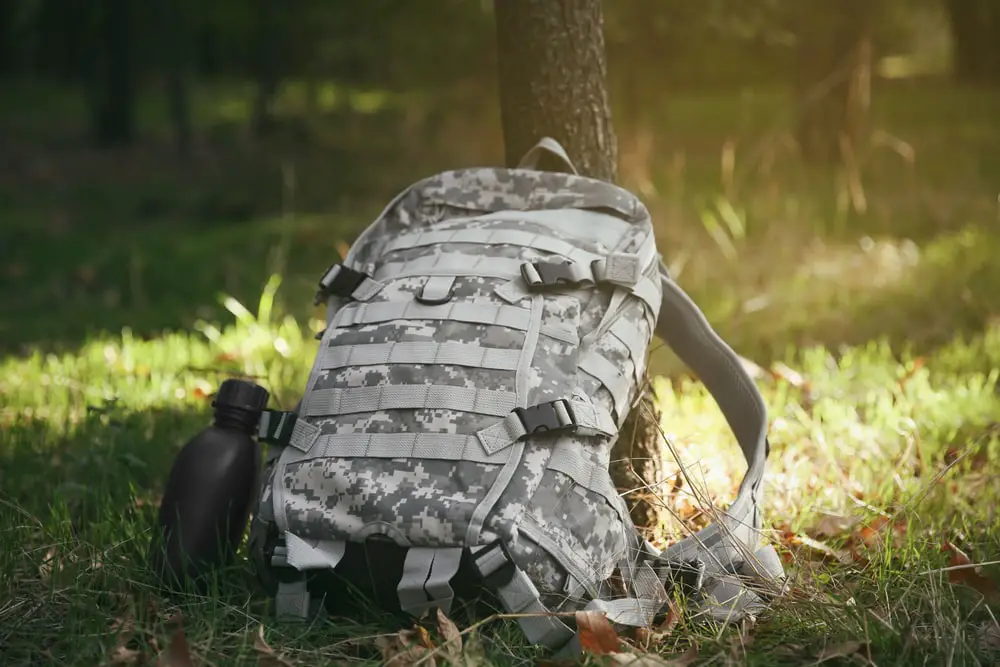
All of us naturally think of getting home as soon as possible when disasters strike. For this reason you’ll need to have a get home bag prepared. Increasing the chances of making it to your home base gives you the confidence and motivation to survive.
A get home bag is absolutely essential if you have loved ones or family members who will rely on you to get them home safely. Remember to take the “When” and not the “If” approach when considering the items you’ll need. You will be glad you did!
Make sure to grab your EDC Survival Kit and some extra gear from your Automobile EDC Supplies. Make sure to grab that Automobile Sun Shade from your car before you head out. This can act as a makeshift sleeping pad, and to reflect heat back to your body when it starts to get cool or cold.
You should probably make a list of these items and put it on your GHB so you don’t forget to grab them from the Car supplies.
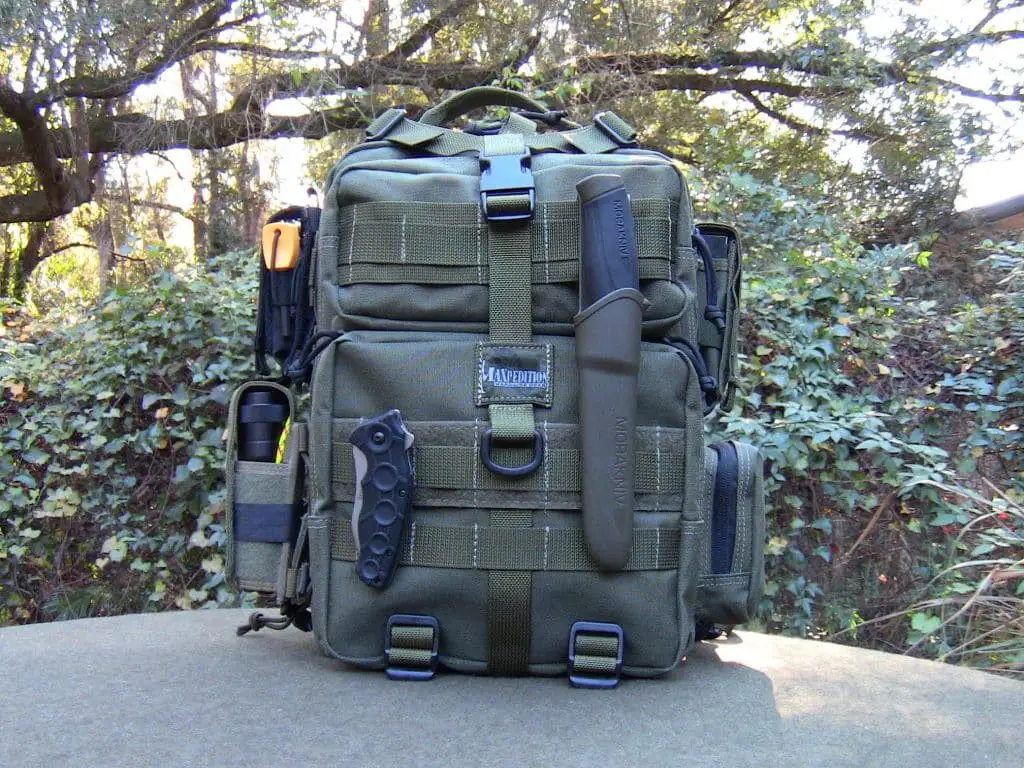
Make sure to add any other item that makes sense for the season, your region, commute or personal needs!
Download the printable Get Home Bag Checklist in pdf format.
Last but not least, take your brain. There will be a lot of lost, scared and predatory people. Use your wits. Watch out for traps. Gangs use “helpless” damsels in distress to lure in people all the time.
I’m not saying don’t be a good Samaritan and don’t be chivalrous and charitable, but use your binoculars to observe for a while to make sure you don’t become the victim.
No matter what happens, you want to get home. What separates you from everyone else stuck on that stretch of road? Your Get Home Bag and your planning is what separates you from them.
E. Testing Your Get Home Bag
So you worked on your survival bags for the past 6 months. You hand-picked the items to get the best ones for the best price. Heck, you even assembled your own first aid kit….
But have you actually tested your survival bags? Did you simulate an emergency and try to get home in record time? If you’re not doing this now, in a survival situation, you’re gonna wake up with a slew of problems you never really thought to. This is why drills are good: they uncover holes in your prepping plans you wouldn’t otherwise see.
Let’s see how you should test your get home bag and, with it, a few get home scenarios. You need to know how you’ll be getting home in case of an emergency.
If you have a car that you use every day, that’s probably where you keep your GHB (short for Get Home Bag). On the other hand, if you’re using a bike, public transportation, taxis or even go on foot, then you need to do things differently.
In short, you have to test getting home in record time but there’re a few things to consider.
For example, you’re gonna need to think about getting speeding tickets or even causing an accident. While you buy simulating a disaster in your own head, the rest of the world won’t see that, particularly the police officers who won’t hesitate to stop you.
On the other hand, if you’re using a bike or if you’re on foot, you can rush it. People will just assume you’ve got an emergency and will even step aside to let you pass.
So how would you go about testing your GHB? The first thing you need is time. If you’re at work, you need to make sure you have time to get home and then come back from your lunch break.
Doing it during the break is better because it puts extra pressure on you to get back but you can also do this in the evening when you finish work.
One thing you need to do in advance is to measure how long it typically takes you to get home, so you see how much faster you’ll be in case of an emergency. It’s always good to have a benchmark so you can break your record in subsequent drills.
Yes, doing this drill more than once is recommended. You’re gonna need to simulate taking a different route and even more complex scenarios such as getting into a car crash or running into an angry mob that stops your car and surrounds it.
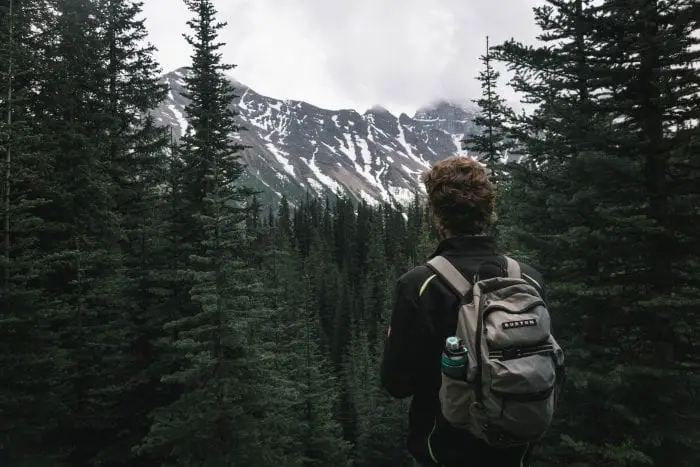
No, you don’t have to stop your car in the middle of the road or use pepper spray but stopping the car on the side of the road and seeing how fast you can reach your self-defense weapon will work.
Ok, we talked about testing the self-defense items in your bag. You learned that if the bag is in your trunk, you can’t really get to them unless you get out of the car. How do you actually test the other items?
It’s easy. You just have to imagine running into various obstacles along the way and having to use the items in your bag to overcome them. For example. If you see a vending machine on the side of the road, quickly stop the car, then use the cash from your bag (not your wallet) to get some water and energy bars.
Another thing you can do is call your friends and family along the way; this will help you practice your distributive attention.
I should mention you shouldn’t use the phone while driving unless you have hands free. You also don’t necessarily have to talk with them about survival as you don’t want people on the bus (if that’s what you’re taking) to panic or think you’re crazy.
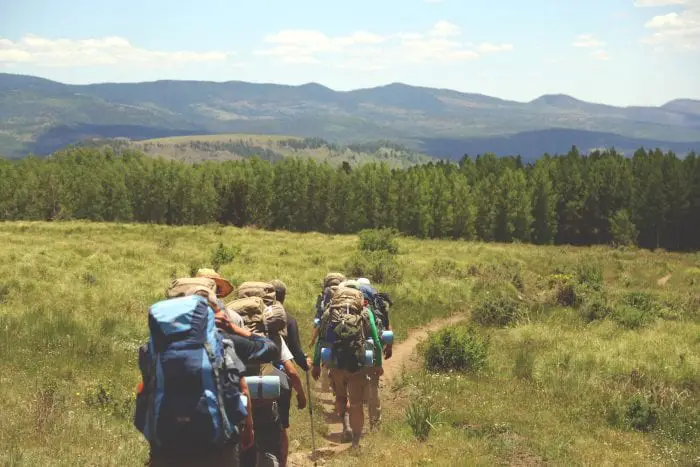
Last but not least, let’s not forget that if your GHB is too heavy or if you haven’t done a push-up since high-school, you’re either gonna need to carry less stuff or improve your fitness levels. The last thing you want is to stop every couple of minutes to catch your breath.
Final Word
If you liked what you read, that’s great. If you actually went ahead and did it, that’s amazing. Once you start taking action, you realize some of these survival drills aren’t that hard at all!
And if you’re wondering how to assemble a get home bag, there’re plenty of resources out there. You just need to keep the whole thing light (unless you keep it inside your car) and to always have quality items inside.

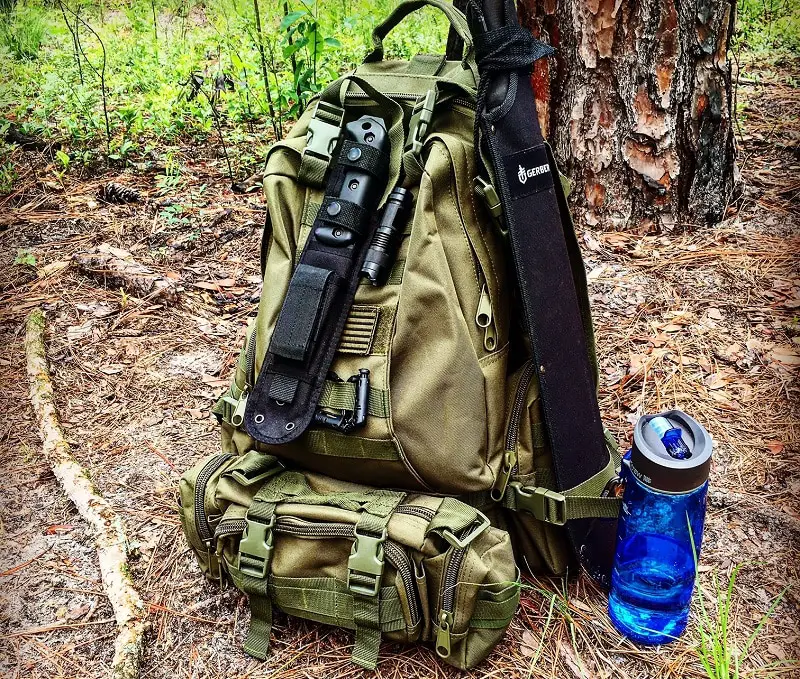
Can’t believe you didn’t mention a gun and extra ammo.
I am 100% for having a firearm and ammo in your get home bags. In Maryland, where I live, there is no legal way to carry a firearm in your car. You can only have a pistol or regulated weapon in your car, if you are going to the range or coming home from the range. If you stop for gas or anyplace else along the way, you just committed a felony.
If you can carry legally where you live, then do so!
that is beyond stupid, as far as laws go.
Time to move or get a bunch of new pro second Amendment politicians. Just remember with out the second amendment there will be no others.
Having had a firearm stolen from my truck, it was hidden, I am leary about leaving a firearm in my vehicles at all times. I do have a ccw so I carry all the time anyway.
Extra ammo is a good idea. If that gets stolen then you are only out a little bit of money, not a complete firearm.
The nice thing about anything happening is that there will be confusion for the first few hours. Keep your head about you and bug back home fast. Or if you are at home secure your perimeter and hunker down. Keep the lights off and keep quiet. Let things settle for a few days.
Remember, you are your responsibility, not law enforcements. They may not even be there to help.
Get a safe for your console.
I mounted a lock Box underneath my backseat bolted to the floor
Great idea. I need to do the same for the rear seats in the Jeep that open up.
Great list! Woobie to go with the poncho. Option: spare clothes bag. If it is winter weather and/ or one works in a suit, a change of clothes to get home clothes would be ideal. Easy to always have in the car ( just incase a non emergency such as you dumped your 72oz slurpee into your lap while driving). City dwellers may wish to have a ‘universal key’ for doors etc.. Distance from home is the real deciding factor in size and amount of gear. Just be careful not to overload ( easy to do). Workout once a week with the bag on. Pushups, climbing stairs moving through doorways. If this cant be done easily then the size needs to be parred down ( or one needs to grow stronger).
Good sensible list. I might add for city dwellers that if you must walk through the urban jungle to pack some safety type items including heavy work gloves, safety glasses and an N95 mask. Also, a way to pry open doors/gates or snip through fencing is not a bad idea depending on what may lie between you and your home.
+ Many pre-paid cards will expire a year after you purchase them. Others, will expire if they haven’t been used after so many months. Make sure and check the cards before purchasing. And add to your calendar a month notice before they do.
+ Most smart phones have free flashlight apps. Of course, you need a regular flashlight. But some will automatically do S.O.S.. Which could come in handy. (Hey, you have room on your phone for Candy Crush, you have room for this!) There are also ones where you type in a message and it’ll do morse code for you!
+ Clear swim goggles. I know, sounds stupid. But when we have a bad snow/rain storms, I’ll wear them while walking to work. They’re small and easily fit in a coat pocket.
The most important thing is to have a non-tactical appearance.
Nothing screams “I’ve got a gun” as some military knock off with molly web.
Plus it may not be advisable to be mistaken for a member of the military.
That British soldier who was killed by radical muslims on the streets of England is proof of that.
Tactical is not practical.
K.I.S.S. I disagree completely. Predators will be looking for soft targets, i.e., YOU. I recommend open carry and a back-up. They’ll be much more polite if they know you can defend yourself.
Yeah, I’m a skinny guy with really tough tattoos (know that’s not a survivalist look, however. . .). You could always wonder if they’d attract trouble, but after 20 years, it’s always been the opposite. I think people give me more respect, and I’ve never gotten into a fight over them or anything. Been through a lot of bad areas many times, too.
Maybe it’ll be different in different areas of the country, but in my area, I don’t especially think people would see a guy in army/navy store clothes and thinks, “There’s a prepper, get him!” I guess we’ll see if / when SHTF.
During normal times, most crime is committed against friends/family members/acquaintances and against people perceived as weak. I’m sure you may have heard that. Of course, SHTF is different circumstances.
At least there’s some kind of logic to the idea that the prepper-looking guy will be targeted, but it seems like a better gamble to appear strong instead of weak. People will try to commit a violent crime ***if*** they think it’s not going to ruin their day.
Like what’s that advice about confronting a bear? You may yourself look large and make a lot of noise instead of running away?
LOL. Girls have tattoos also. To think ink on the arm is any kind of detterent is the stupidest way of thinking.
not true- perception is huge. A guy with pink hair wearing emo clothing may seem like a soft target to some. Basically until the 1990s tatoos held a HUGE stigma, same with motorcycles. If you road a motorcylce, odds are you were trouble. Harley Davidson did an amazing marketing campaign to dispel that, and open their product up to young professionals etc. with that perception comes risks. IF someone thinks you look military they may stay away, if its a group they may assume you have resources. Basically, just avoid people
Well, even the back packs people carry at work have the molle and tactical look. Anyone wearing a back pack is obviously prepared at some level. Here in Tennessee I think you would be hard pressed to not look tactical at some level. I think for me I would try to be off road as much as possible and walk the wood line if possible and try to avoid people, like most would.
My husband and I just put together our GHBs. Of course, his is over loaded, but he’ll figure that out soon enough. Just wanted to suggest measuring the distance from your job or the most likely place you’ll be when tshtf, to home. Make mental notes during your commute (or on a map) of distances (5 miles from work to the tracks; 4 to the water tower, etc) then you have an idea of how much further you need to go; make yourself aware of places that you might find water, where you might possibly camp for the night or hide along the way; something else to think about is getting past downed bridges, over passes, anything that might block the way.
Decide if it would be better to spend the night in your locked car and rest up or start off right away. My husband works 20 miles from home and is on his feet all day. He’s also wet by the end of the day. I suggested a change of clothes and boots, hang wet stuff so they might dry, and sleep before starting out. I’m gonna have to hike 15 miles, about 10 miles is uphill. I’d probably do the first 5 miles right away just to get out of town.
So far we have everything you mentioned except the compass and prepaid cards. I’m thinking pepper spray might be a good idea also.
Now for a question—I’ll take answers from anyone. Traveling home—main roads or side roads? Also, our daughter goes to college 80 miles away. She said she’d like to try to get home. I suggested she better ride her bike. Except for the first 3-5 miles and the last 11 miles, the majority of the distance is freeway. So for her—the back way or straight down the freeway? Only problem I see with the freeway is other people on foot who might try to take her off the bike. Opinions?
How about a unisex or masculine-looking baseball cap and lightweight zipper hoodie in her bag so she can basically disguise herself?
Not sure if there’s enough of a single right answer to the main roads or side roads question. I think it depends on more specific circumstances than that. Normally, more concealed areas are dangerous places for women, but it seems like there may be pretty bad stuff about the main roads, too, at the zero minute when SHTF.
Think I’d be giving you too much of a pedantic, theoretical, abstract answer if I tried to pick one or the other. I think it would depend on the people at the specific place and on how people react to it when SHTF. Those commuters getting out of their cars may be taking it pretty calmly and acting principled, and I don’t know anything about who lives on or frequents those side roads.
Resist the urge to over pack. You are just trying to get home, not going on vacation. Don’t be afraid to work of “the list”. It is a guide, make it your own by adding and taking away as it suits you or your situation. Good Luck!!!
Some (like me) travel every week – I’m as far as 375 miles from home. My GHB is geared more for long-term hiking/camping than anything.
My top 10 items I refuse to be without:
G21 (Glock.45)
Buck 124 Fixed Blade
Lifestraw
Firemaking (I use small jars of Vaseline-smeared cotton balls w/Bic lighters strapped to them)
Flashlight and headlamp
Fishing kit
Stainless mess kit
Heavy duty poncho
Machete
20 oz silver
Silver. Me too, that stuff is a great antiseptic. It works against bacteria, viruses, mold, and fungus. I put it on my ear plugs and they never itch. I’ve used it for my feet and underarms and it works great! I spray it on bandaids before I apply them too. It also helps on itchy spots and helps with bug bites. Also, get yourself a silver spoon, maybe from a thrift store, make sure it’s not sterling. Rub a rag on it and get some of the oxides (tarnish) or just silver particles, which will quickly tarnish. The rag will then work better as a water or air filter.
Thanks for the ideas of carrying maps and a last ditch kit. I think those were the best ideas you had that I didn’t think of myself for a bugout bag or get home bag.
Like the auto sunshade idea, too.
My take on it:
Don’t try to go too James Bond or anything. Go light. It’s just a bag for getting home without getting too rattled by anything, for helping you avoid any big problems. And the situations or dangers that you think you need really special gear for are too unlikely to happen. It’s more kind of just like an overnight bag. Yet it’s also supposed to just start to provide some capability for when getting home doesn’t end up being that easy, but turns into something that goes on and on, or when it ends up being pretty crazy out there.
That said, the commercial bugout bag is making you think the wrong things because of its elaborateness and James Bond factor.
And maybe the more important item than the bag itself is a folding bike for the trunk. Or even snowshoes?
The bag itself could be any backpack that fits the gear, and isn’t too heavy, and most of all is comfortable. It should have the standard foam straps used nowadays on most backpacks, not like any kind of fashiony, thin canvass straps. It shouldn’t be any kind of heavy, large hiking backpack.
Some of the items may be things you tend to carry on your person or in your car, but just include the duplicates in the bag anyway in case anything gets left behind, dropped, etc., if you’re fleeing your car in a rush.
This version of a get-home bag stays pretty appropriate for all seasons:
Food
-granola bars and cookies equal to maybe 1,000 calories. If you can eat more than that in one day normally, why carry only 1 – 3 granola bars for bugout / get home conditions?
-a bottle of water, neither very small or very big
-a collapsible canteen
-disposable plastic cup (for sharing out or obtaining water)
Replacement/additional clothes
-sneakers, or at least moccasins or driving shoes with walking soles that aren’t that bad
-t-shirt
-thin, long pants like athletic pants or cargo pocket pants made of light material
-1 underwear
-1 pair socks
-thermal underwear or base layer top and bottom
-thin gloves
-winter hat
-neck gaiter type scarf
-visor hat
Money- maybe $20
Other gear
-small, cheap 16×32 binoculars like Celestron
-lighter
-sterno
-Coleman campfire tinder stick
-folding knife
-space blanket
-cheap, fold-up, disposable plastic poncho
-sunglasses
-1/2 finished roll of toilet paper
-LED light
-HotHands chemical hand warmers
-travel size bug repellent, sunscreen, and aloe
-QuickClot
-a few various band-aids for blistered feet
-a few water purification tablets
All that fits in a medium sized backpack with no problem. And it’s cheap, and includes maybe compact and lightweight items. But anything more might be the point at which the bag starts to become heavy. That said, here are my suggestions for possible additional gear:
-very small bottle hand sanitizer /individually-wrapped wet wipes
-cell phone
-walkie talkie
-watch
-a few antacids or a few aspirin
-compass
-map
-small radio
-candle
-tissues
-mini umbrella
-pepper spray
-glow sticks
-trailmarkers / fluorescent tape
Good ideas for bagging it- cheap waterproof bags for campers. Everything goes in these bags and then into the get home bag
Last ditch kit- put some of the stuff, maybe a lot of the stuff besides the clothes, into up to three belt pouches, such as molle pouches. At a convenient time when / after you bug out of your car, take them out and put them on your belt.
Don’t think of it as much as like an action-adventure story or an apocalypse movie as for just an unexpected, very long walk home. Then the bag won’t get too big or weird.
Last thought- Maybe a lot of people would decide to stay with their cars or their building at their place of work and try to wait for the authorities to rescue everyone. I think you should consider whether it’s a good idea to just wait the night through rather than immediately bugging out. It’s just not necessarily a good move to rashly leave your car just because you happen to have a bugout bag. If it hasn’t worked out by the next morning, though, I think you should try to get moving very early, before there are other people getting up and starting walking.
And if SHTF and you have to leave your car, and you find after a while your bag is heavy and uncomfortable, take some of the stuff out and leave it
Wow, this is quite the list of resources and quite a series of replies!
I think the whole subject of survival is fascinating, and I’m always interested to learn new things about it- after all there are so many types of situations to be in, from the classic Robinson Crusoe, to being stranded on a highway. I feel like the list of answers to every “what if” variable got so big that that’s why we stopped being a nomadic species and built homes for ourselves with everything we need in them… although there are variations on the definition of “need” there too, because I have enough groceries to last my family a week, and maybe three if we we used up everything from our freezer and pantry, whereas some people have heavily stocked supply rooms for every occasion or fallout shelters.
I like that the list includes your brain, because frankly the sheer will to survive, the ability to calm yourself in a stressful situation and some common sense will go a long way. If a GHB is for when your car breaks down then I don’t think you even need a bag and you can stuff some good hiking shoes with snacks that give you energy and a bottle of water. If a GHB is for getting home during or after a natural disaster, then the list can go way off the charts because of how many things could go wrong. Before you know it, you’re packing collapsible paddles and aircraft piloting manuals.
I think a thorough analysis of “the basics” that are appropriate for your climate, keeping fit and a sensible head are powerful means of survival. Just think of a mother’s purse: mom will always have a snack, a change of underwear for you, something to drink and a thingy of napkins to wipe your face. If I’m having to build fires and pitch shelters in this day and age, I feel the lack of some of these items (as useful as they are, don’t get me wrong) is the least of my worries.
When I was about twelve I read an old survival book and they said that the absolute basic things you need are a knife and a steel cup… some food for thought I guess.
Lastly I may just be a naive Canadian, but in my opinion (please guys, don’t rip me apart), I can’t say I understand this push for weapons. Like I get having a rifle… it’s for hunting. But always being armed leaves you with an option that nobody wants to resort to. I know that people go nuts in survival situations and I haven’t lived a danger-filled life, so maybe I shouldn’t be allowed to speak on this matter, but doesn’t violence beget violence? Doesn’t pulling a gun make anyone else who has a gun pull theirs out too? Please don’t shoot me.
Matt, I understand your revulsion to violence. I believe it is commonly shared. The law in my state, and likely others with variance, is that (a) you can only lawfully respond with equal force, and (b) you cannot be the aggressor. As one example, as a CCW holder I will not blow the horn even if warranted. Why? If the other party produced a weapon and I used mine to defend my life, technically I would be the aggressor and at fault. A sheriff gave another example. If they come upon a situation where a man is mercilessly beating a woman on the ground to death, they will first separate the two vs. shooting the man committing the battery. Why? They are held to the same standard. The woman might have started the altercation and therefore be the aggressor. Once separated however, if the man again attacks, the situation has been reset and they may act with deadly force to prevent great bodily harm.
Yes, it’s complicated, but detailed knowledge of the law comes with the responsibility of having a CCW, or using any firearm for that matter. CCW’s are actually rather limiting. You’re lawfully forced into turning the other cheek until and unless threat of death or great bodily harm to yourself or another innocent (non-aggressor) victim (sheriff’s example applies). Lastly, concealed means concealed. Brandishing a firearm is an assault, even if the intent was to deescalate. If it comes out, all lawful criteria must be met.
The overall presumption here is that law enforcement will be so overloaded as to be virtually non-existent, and this taken advantage of by those that prey. I live in a very nice area, but work in a blighted industrial area. Everyone’s reality and challenges will be different.
Best Wishes.
There are many places where citizens do not cary firearms, due to city, state, province, or national laws. I find that people in these areas end up being misinformed or uninformed about those communities where personal carry is legal and in practice.
–
I know many people who carry handguns and the best way to explain it is: it’s just a tool that you have, which you may never use. Think fire extinguisher, car jack, tow straps, alarm system, etc. People carry them on their person so often, that they oftentimes forget it’s there. It’s like having a pocket, which you CAN use as a weapon, but never do, except the handgun has little other utility, other than self protection.
–
Also, you wouldn’t just pull a gun on somebody, unless they pose an eminent threat, something like pulling a knife or angrily physically assaulting you. So, if you truly believe you or your loved ones are in danger of death or serious bodily injury, you could both pull and use the firearm simultaneously. Here in the US, the legal system frowns upon threatening someone with a firearm. For the most part, you wouldn’t pull it until you’re ready to use it, no warnings required.
My get home bag is with me in the car and brought in when I get home. I never leave it in the car overnight. Way too many car break ins in my area.
you need to rig your door handles with a nice shock to help to reform the scum from this activity.
I also have a drop bag as part of my kit. For those that don’t know a drop bag is just an empty canvas bag you can just throw stuff in while on the fly. You won’t always have time to remove your pack, open it up, and stow something when on the move
Sorry, I’m late to the game,
1st) I love the article and thank you for your detailed work here. As a U.S. Mil vet – Top notch. Seriously.
Here comes the but…
RE: “2) Storing Your Get Home Bag”
I’m having a serious problem with the logic behind the following:
“Stashing it in the trunk of your car is not recommended as your vehicle may prove to be inaccessible in certain situations, i.e., riots, earthquakes, etc.”
– not stashing in the “trunk” makes sense to me, (if you aren’t capable of accessing your trunk from the inside of your car – although cars nowadays are capable of accessing the trunk from the inside)
But not in the car at all? this doesn’t make sense.
Going further: “Good storage places include your office, a nearby public locker or a PO Box. The key here is that it should be accessible most of the time.”
Well, outside of in the office anyone’s GHB is most accessible to in the back seat (ore accessible trunk) of their POV.
I cannot fathom how a “nearby storage locker” would be closer to me than my POV in any given scenario. And storage lockers have hours of access.
I also cannot fathom taking my GHB to the office everyday without it being beyond conspicuous.
– Why would a nearby storage locker, in an earthquake situation, a riot situation, or anything else, be easier to access, or closer to access, than the back seat of my POV right outside my place of work?
Who parks farther away from their office/job site than a “nearby storage locker” or a “P.O. box”?
Also, given that you might need your GHB in the middle of the drive home, I guess the suggestion is that every day after leaving the office, I’d need to go to the “nearby storage locker” to pick up the GHB before going home? This step seems both untenable over time as well as problematic when S actually H’s TF.
Consider the following: Most of the time I will be stuck in a riot is not from my office to my car. People don’t riot inside car parks, and rarely in parking lots that I’m aware of. Odds are higher that you would be stopped by a riot while in your POV attempting to drive home (i.e. antifa, etc.)
Also, in the case of an earthquake, even if I’m at work when it hits, unless I’m in a crumbling building (in which case many of the items in my GHB will be useless anyway) then the best scenario would be for me to drive out if I can, or get my GHB out of my vehicle and hoof it home.
What happens when the drive home is interrupted by an earthquake, riot, etc. thus causing me to grab my GHB and hoof it? So, would I then need to go back to the storage locker or P.O. Box? Or would I have already grabbed it from the storage locker or P.O. box and have it with me? Seems tedious and time consuming to do so on a daily basis. And if I simply left the GHB in the locker/P.O. Box, then I wouldn’t have it in the POV when I needed it.
The only time not leaving your GHB in your POV makes any sense to me is that if your live in such a metropolitan area that you work in a skyscraper and/or park in a lot/facility a good distance away from your place of work. Then by all means, take your GHB into your office and back out on a daily basis. Seems a tad tedious otherwise.
The skyscraper thing may be an issue for some, but It’s not the majority of folks. I don’t have the stats, but I’d be willing to wager the vast majority of the population parks just outside the building they work in, which makes the GHB easy to access from their job, and easy to access while in their POV getting home.
In short:
The whole point of a GHB is to help you get home.
The thing that gets me home regularly is my POV.
So why not store my GHB in my POV?
Because “storage locker”?
When I set up the wife and my GHB’s, I looked at the distance from our respective work sites, the main as well as secondary and tertiary routes, and based the bags on the longest calculated distance hoofing it would take. Since 95% of the time, our longest distance from work to home is under 25 miles, supplies for 48 hours is ample to get home. These are labeled GHB 1 and stay in our vehicles at all times. The farthest we often travel from home is to our cabin, roughly 70 miles away. An additional kit, GHB 2 is added to whichever vehicle we take. It augments GHB 1, without duplicating the duplicates. The last GHB is #3, for the once or twice a year, that we’re about 120 miles from home. Again, it augments #1, duplicates #2 as well as the additional supplies for an extended walk.
GHB 1 are both in waist packs. GHB 2 is a rucksack. GHB 3 is a full size framed Backpack.
Since we’re both CCW permit holders, there is extra ammunition in each level in case of need. GHB 3 has an AR 15 9.5″ Pistol in .300AAC stored in the pack as well.
At first I tried setting it all up in one, then looked closer and realized that most of our daily/weekly distances wouldn’t require that level of prep. Setting it up in stages/steps just made a lot more sense.
Anyone interested in a similar set up, shoot a reply and I’ll give you the complete list of what’s in each stage.
Hi, great article. I’m hoping Chuck Cochran can give me tips on the 3 stage GHB setups. I live 12 miles outside the closest small town, and work 63 miles away from home. Thanks!
Awesome set up! Fantastic idea.
What about travelling with small kids? As a mom (with 5yo and 8yo girls), I travel everywhere with them.
I have packed extra supplies for them (snacks, clothes, meds, etc.) and also fanny packs with basic supplies (lighter/matches, water, socks, whistle, flashlight, ID, and contact info) justin case we are separated and to help carry the load. We would be vulnerable and slow moving (heck, that describes a trip to the mall!🥴). I feel like my bag is very heavy for me, but I struggle with having to carry and provide for 2 kids.
I have a plan for alternate meeting places with my husband besides home if we are quite a distance away (he would be able to travel farther/quicker to reach us).
Any tips for a mama bear?
Mama Bear, consider using a couple small cary-on bags with wheels. A little larger one for you and a smaller one for the 8ry old. Don’t go too heavy because you may have to lift and cary the bags, depending on your route, the weather, and the specific emergency.
–
However, you could have a little redundancy between the two bags and if you need to drop weight, you leave one behind (no, the bags, not your kids!) This might sound crazy, but you might just keep a collapsible pull wagon in your SUV because the 5yr old is going to get tired right as you need to go. That would be in addition to the SMALL rolling bags.
If you work 10mi or more away from home, you might want to consider burying a 1 gal bucket, with a few key items, somewhere along the way. That way, in case you cannot get to your GHB, in the ruckus that ensues after whatever event just happened, you have the possibility of getting to a few key items: A gallon bucket can hold a significant cache of useful items (obviously you would not want to leave a firearm for some kid to find).
Wow, my list is bigger than my bag now! I need to empty it and prioritize. I do have a bigger bag packed but that’s not practical for getting home.
Mine is a solid green tactical looking bag. I like the idea to have something non-tactical, but since my pistol would be in a green drop leg holster and my little Shockwave shotgun on my shoulder, I think I’ll stay with the tactical pack.
Definitely will come back to this site!